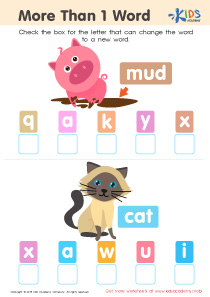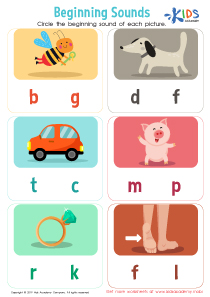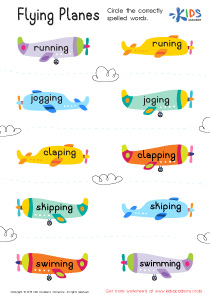Sound recognition Vowels Worksheets
5 filtered results
-
From - To
Welcome to our "Sound Recognition Vowels Worksheets," designed to enhance early literacy skills! Our engaging, interactive worksheets help young learners identify and differentiate vowel sounds in a fun and stimulating way. These activities focus on recognizing both short and long vowel sounds through various exercises, including matching, fill-in-the-blanks, and phonetic games. Ideal for preschool and kindergarten students, each worksheet aims to build proficiency in vowel sound awareness, laying the foundation for reading and writing success. Download our worksheets today and empower your child’s learning journey! Let’s make mastering vowels an enjoyable experience together!
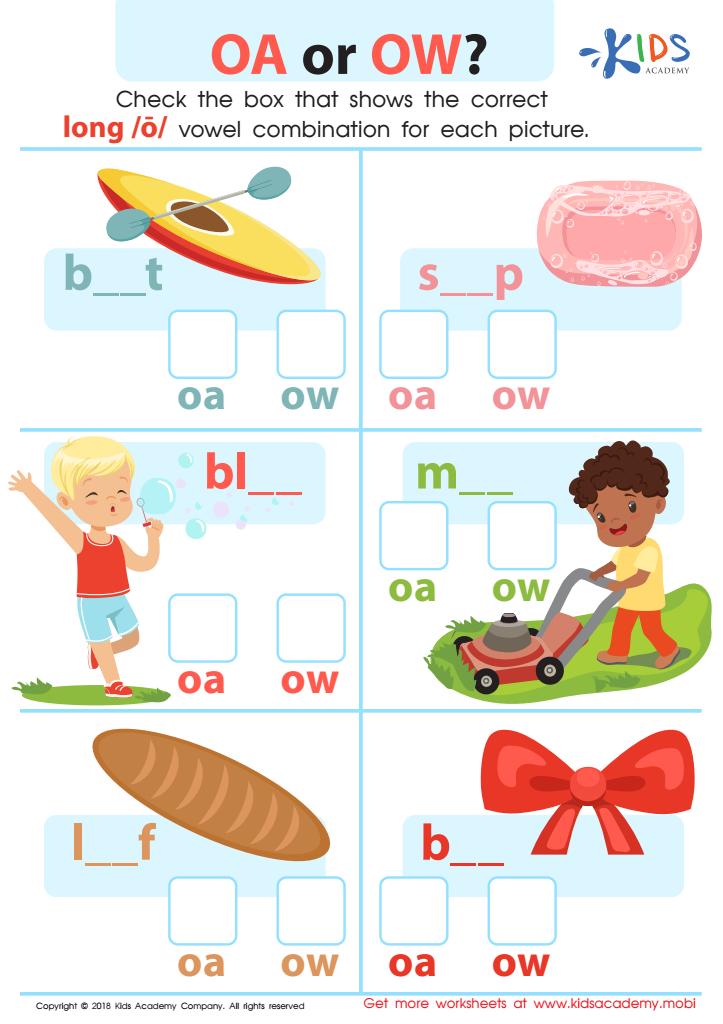

Reading: OA or OW Worksheet
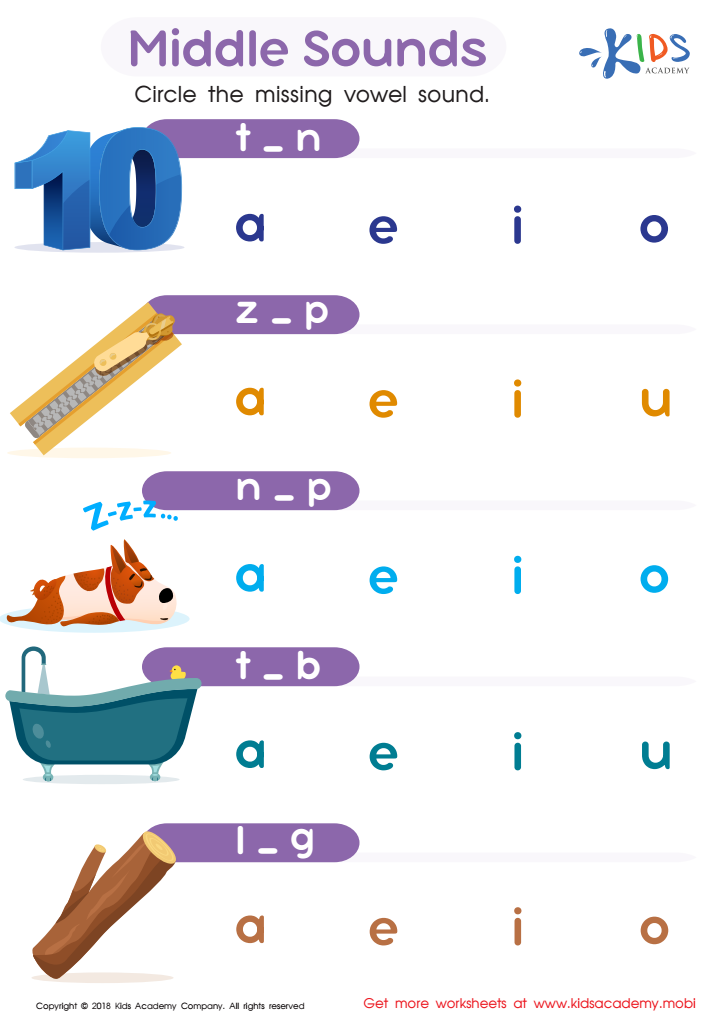

Middle Sounds Worksheet


Long and Short U Worksheet
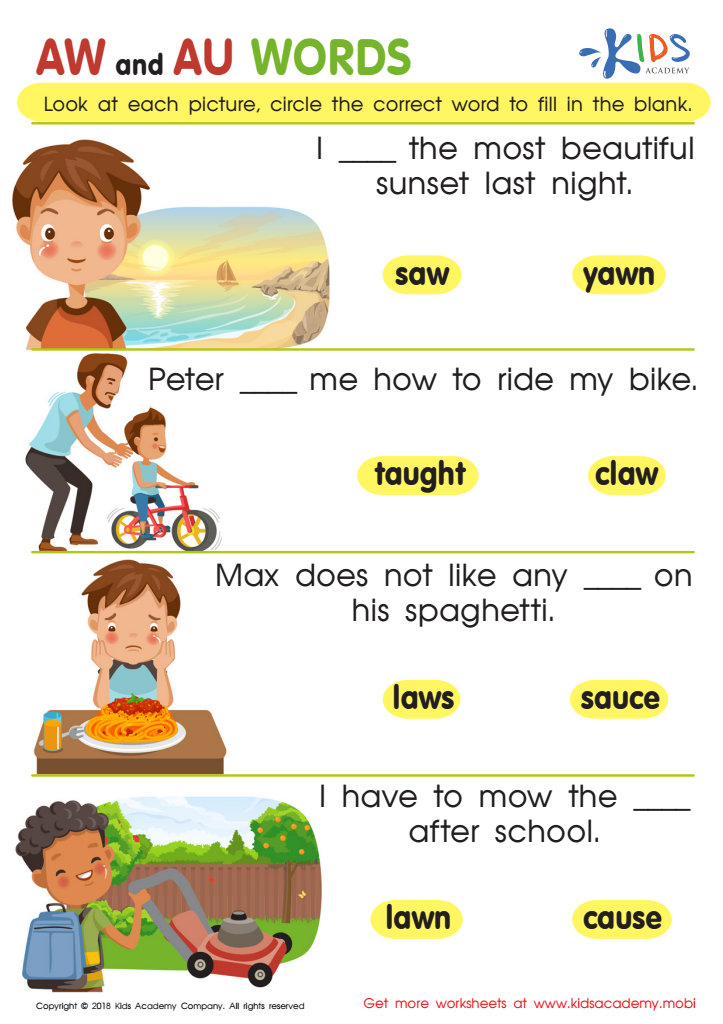

Reading: AW and AU Words Worksheet
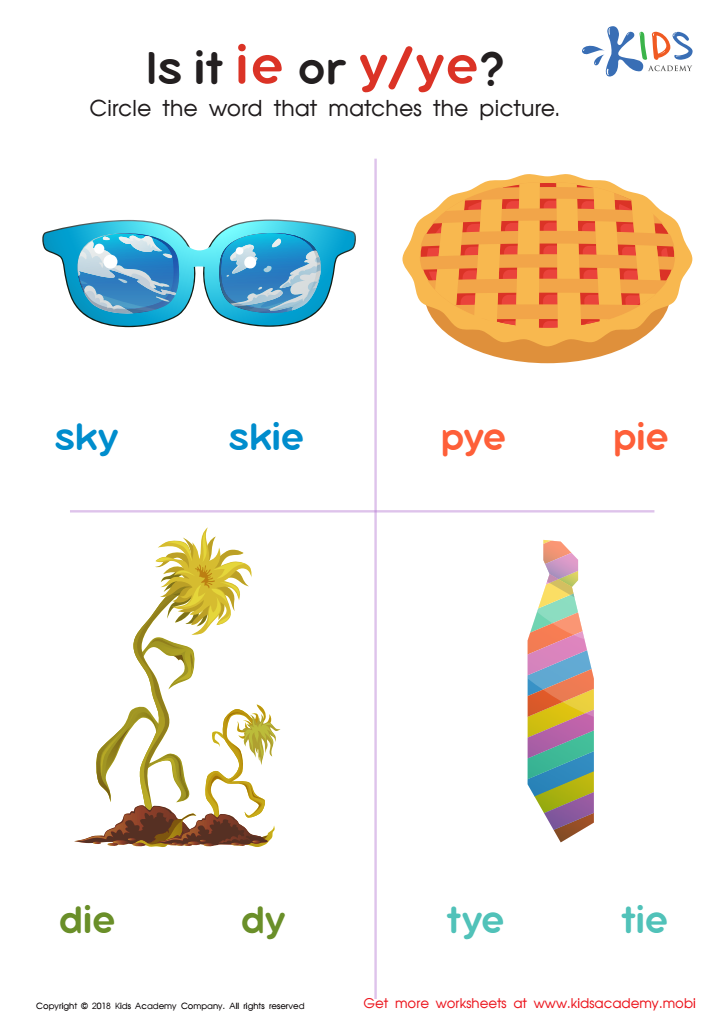

Is It IE or Y/Ye? Worksheet
Sound recognition, particularly concerning vowels, is fundamental to early literacy development. Vowel sounds are the building blocks of words, influencing pronunciation and spelling. By focusing on sound recognition, parents and teachers can enhance children’s phonemic awareness, a critical skill that helps them decode words and improve reading fluency.
Understanding vowel sounds aids children in identifying patterns within language, making it easier to tackle new vocabulary. Furthermore, recognizing the differences between short and long vowels can help children understand word families and phonetic structures. This knowledge fosters confidence in their ability to read and write.
Additionally, early engagement with sound recognition helps establish a strong foundation for language skills, which is essential in an increasingly literacy-focused world. In today’s diverse learning environments, tailored support in recognizing sounds can differentiate instruction, catering to individual learning needs.
Finally, developing sound recognition skills nurtures a lifelong love for reading by making the learning process enjoyable and accessible. When parents and teachers prioritize vowel sound recognition, they empower children with the critical skills needed for academic success and personal growth. Their involvement is crucial in paving the way for a brighter, more literate future for young learners.

 Assign to My Students
Assign to My Students






